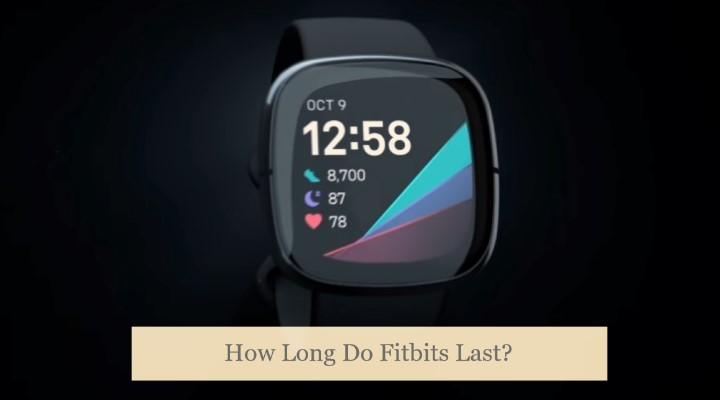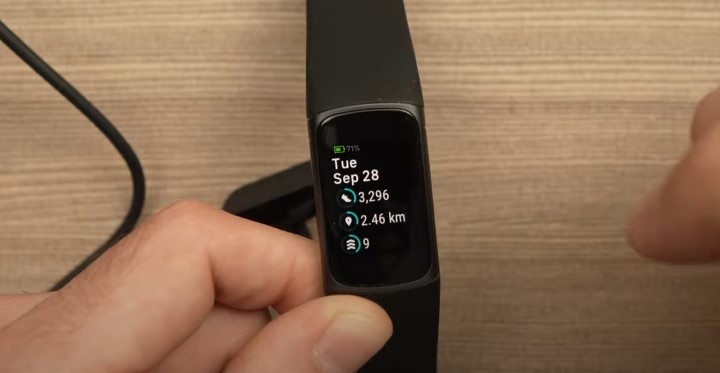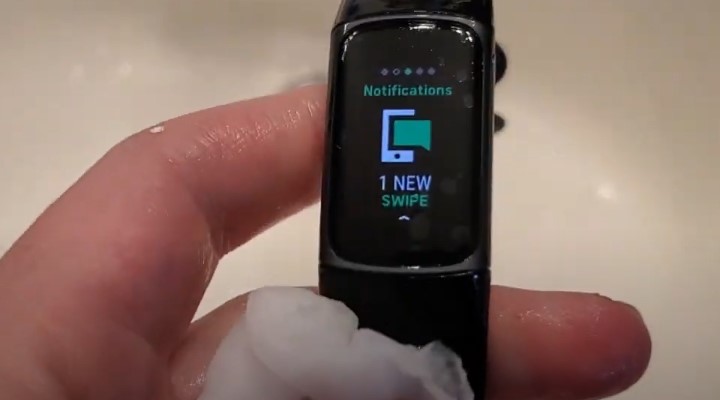Unlike most other devices, fitness trackers and smartwatches, especially the wearables from Fitbit, are built to withstand abuse and last longer in the elements. They’re also usually more affordable than their competitors, making Fitbits a seemingly good buy for those looking to keep track of their well-being.
Despite using durable, premium materials, Fitbits aren’t totally immune to regular wear and tear and have no guaranteed lifespan. So the question is: How long do Fitbits last? Here’s everything you need to know.
How Long Do Fitbits Last?

A Fitbit will typically last you two years with everyday use. However, when treated with proper care and maintenance, you can expect your Fitbit wearable to last for three to four years and sometimes even longer. That said, most users agree that two years of use is the sweet spot for a Fitbit before an upgrade.
Passing the 24-month mark, you’ll see yourself charging your Fitbit more often as the built-in battery’s capacity fades after hundreds of charge cycles. That’s totally normal behaviour for rechargeable lithium-ion batteries, mind you. However, the rate at which batteries age and degrade depends on several factors, including charge times, temperature, and the level at which it’s charged or discharged.
The average lifespan of a Fitbit is also rated slightly differently depending on the model. Fitbit’s Charge or Luxe trackers, due to their low-power usage, will probably fare better in the long run compared to the Versa and Sense smartwatches, which have a bigger screen and far more power-hungry hardware.
Tips to Extend Your Fitbit’s Lifespan
Although most Fitbits function optimally in different environmental conditions for up to two years, you can keep the following tips in mind to extend your Fitbit’s lifespan:
1. Follow Healthy Battery Practices

Like other devices using Li-ion batteries, your Fitbit’s battery will also deteriorate over time. In fact, a degraded battery is the primary culprit to all kinds of problems, such as unexpected shutdowns, failed biometric readings, a flickering screen, and your Fitbit not powering up. Thus, you must ensure to keep the device’s battery healthy.
While Fitbits and smartphones, tablets, laptops, and other modern electronic devices feature overcharge protection, it’s better to be safe than sorry. The good practice is to charge your Fitbit only when it’s low on battery and not leave it on charge all night.
You shouldn’t leave your Fitbit with a fully drained battery for extended periods either, as the wearable’s battery may be incapable of holding the charge when you try filling it up again.
Fortunately, Fitbit offers paid battery replacements for when you eventually end up with a dead tracker or watch. Alternatively, if you have technical skills and DIY knowledge, you can replace your Fitbit battery with a new one. Check below video guide for more information.
Fitbit Battery Replacement
2. Avoid Exposure to Liquid
Most Fitbits come with a 5 ATM water-resistance rating, meaning one can wear it up to 50 meters underwater. However, don’t let the number fool you into thinking that your Fitbit is immune to liquid damage.
The water-resistance seal Fitbits use loses its effectiveness over time due to natural wear and tear. Further, Fitbit probably doesn’t test its wearables for every possible real-world scenario. And besides water, the devices aren’t put through the same rigorous tests with other liquid types you encounter daily, including beverages, dishwashing agents, soap, shampoo, and so on.
If you’re into recreational diving or ever submerge your Fitbit under salt or chlorinated water, always wash it under fresh tap water and dry it off before wearing it again.
3. Avoid Exposure to Harsh Weather
Fitbit wearables, while slightly more capable of withstanding harsh weather conditions than the standard watch, aren’t stress-tested under extreme heat or freezing cold temperatures. Regular exposure to sudden temperature changes can damage Fitbit’s internals.
Fitbit’s official product safety guidelines advise not to bring fitness trackers or smartwatches into certain places, such as hot showers, ice baths, saunas or steam rooms, etc. Thus, we also suggest wearing your Fitbit only in temperature-controlled environments.
Also Check: Fitbit Versa 3 vs Samsung Galaxy Watch 4
4. Clean Your Fitbit Often

Assuming you wear your Fitbit outdoors quite often, keeping it clean will extend its longevity. When outside, micro dust particles and debris might make it into the internals through the corners of the screen and other openings on the device.
We recommend using a brush with soft, thin bristles to clean your Fitbit. You should also frequently wipe the tracker and the band with a lint-free microfiber cloth, which you can lightly damp with fresh water, 70% IPA, or soap-free cleansers (e.g., Cetaphil).
Don’t use abrasive materials or sharp objects to clean your Fitbit or expose the device to acidic cleaning solutions to avoid corrosion or stains.
How to Clean the Fitbit
5. Keep Your Fitbit Up-to-Date
Firmware updates not only add new features but also fixes bugs, improve performance and biometric sensor readings, and optimise battery life. Therefore, you must make sure your Fitbit is running the most recent firmware version.
To check for Fitbit updates, open the Fitbit mobile app and visit the Today dashboard, then tap your Profile icon above, followed by your Fitbit model. If there’s an update pending, tap the Update button to download and apply it.
During a Fitbit firmware update, ensure your tracker is close to your phone or tablet with the Fitbit app open. Keep in mind that the whole process may take up to an hour, so you won’t be able to use your Fitbit wearable to track your activities for the time being.
How to Update Fitbit
Take Good Care of Your Fitbit
The answer to “How Long Does a Fitbit Last?” is roughly two years, but depending on the model and average usage patterns, it can be much longer. While your Fitbit may not last forever, following the above tips can help extend the wearable’s lifespan.
It’s important to note that while Fitbit makes excellent fitness trackers and smartwatches, they may not be ideal for everyone. If you’re looking to invest your hard-earned cash in a smart wearable that monitors your health, helps you reach your wellness goals, and is sufficiently durable, you might as well opt for a Garmin or Casio G-SHOCK smartwatch.